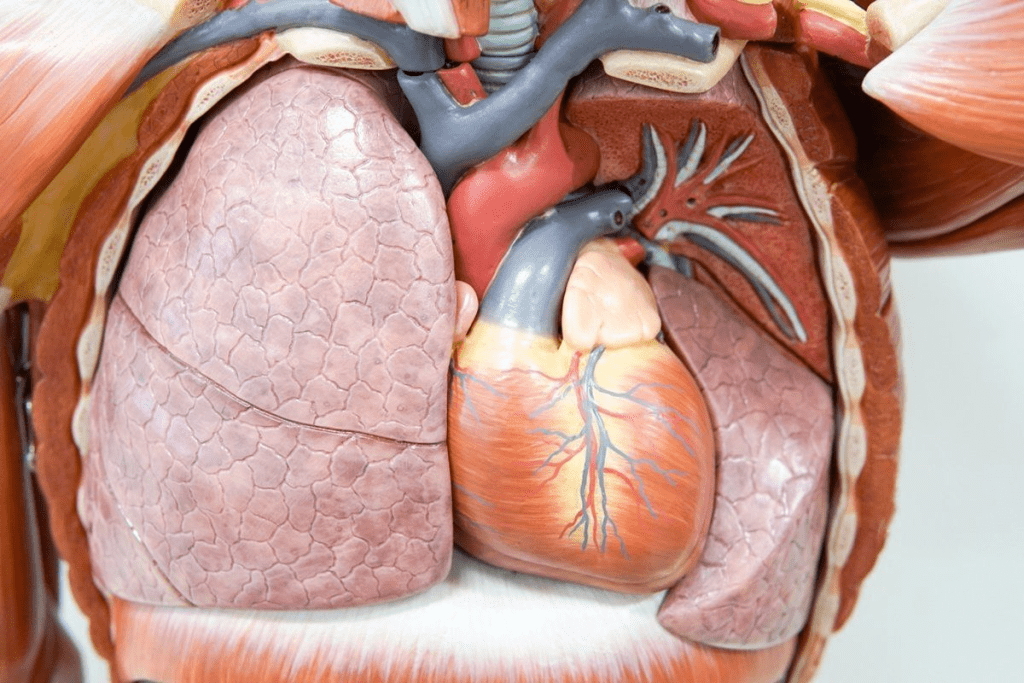Last Updated on November 14, 2025 by
We aim to give clear, easy-to-understand info to those looking for health answers. Angiodysplasia of the colon is a condition where fragile, dilated blood vessels appear in the colon’s lining. This can lead to bleeding, often in older adults.

Angiodysplasia is a big worry for both patients and doctors. Knowing about its causes, risks, and treatments is key to helping those affected.
Angiodysplasia of the colon is a condition where blood vessels in the colon grow abnormally. This can cause bleeding. It often doesn’t show symptoms until bleeding starts, which can lead to anemia and affect life quality.

The exact cause of angiodysplasia is not fully understood. It’s thought to be linked to aging and the degeneration of small blood vessels in the colon. This can cause abnormal blood vessels to form, which are more likely to bleed. It’s also connected to heart and lung diseases, showing it’s a complex issue.
Angiodysplasia is most often found in the right colon, like the cecum. The cecum’s size and tension might make it more prone to this condition.
The condition’s hallmark is dilated, thin-walled blood vessels. These are at risk of rupturing and causing bleeding.

It’s important to know the signs of for early treatment. People with this condition might not show symptoms or might have mild bleeding in the lower GI tract without pain.
Bleeding in the GI tract is a key symptom of angiodysplasia. This can cause occult blood in stool, leading to iron deficiency anemia. The bleeding can happen at different times, making it hard to diagnose.
It can make patients feel tired, weak, and short of breath.
The presence of angioectasias in the colon or small intestine can cause ongoing blood loss. This leads to anemia. Treating anemia is key to improving a patient’s quality of life.
If you have persistent GI bleeding, severe anemia, or an enlarged colon, seek medical help. Early treatment can greatly improve your health.
Knowing the risk factors for angiodysplasia is key to early detection and care. We find that chronic renal failure, aortic stenosis, and von Willebrand disease are major risks.
Chronic renal failure, common in end-stage renal disease patients, raises the risk of , Aortic stenosis, often linked to Heyde syndrome, is also a risk factor for arteriovenous malformation colon. Von Willebrand disease, a bleeding disorder, increases the risk of angioectatic lesions, including avm in the small bowel.
These conditions show how vascular malformations and health issues are connected. By knowing these risks, healthcare providers can offer better surveillance and care.
The colon is a condition where blood vessels in the colon grow abnormally. It often happens in the right colon. It’s a common reason for bleeding in older adults.
The exact cause is not known. But it’s thought to be linked to aging and other conditions. These include chronic kidney disease and certain heart problems.
The main symptom is bleeding in the gut. This can show up as black stools or bright red blood. It can also lead to anemia, causing tiredness and shortness of breath.
Doctors use endoscopy and colonoscopy to find the problem. They might also use scans like angiography or CT scans to see the blood vessels.
Risk factors include chronic kidney disease and heart problems. Being over 60 also increases the risk.
Yes, treatments are available. Doctors can use endoscope to stop the bleeding. Sometimes, surgery is needed to remove part of the colon.
Preventing it is hard, but managing health conditions helps. A healthy lifestyle can also reduce risks.
Subscribe to our e-newsletter to stay informed about the latest innovations in the world of health and exclusive offers!